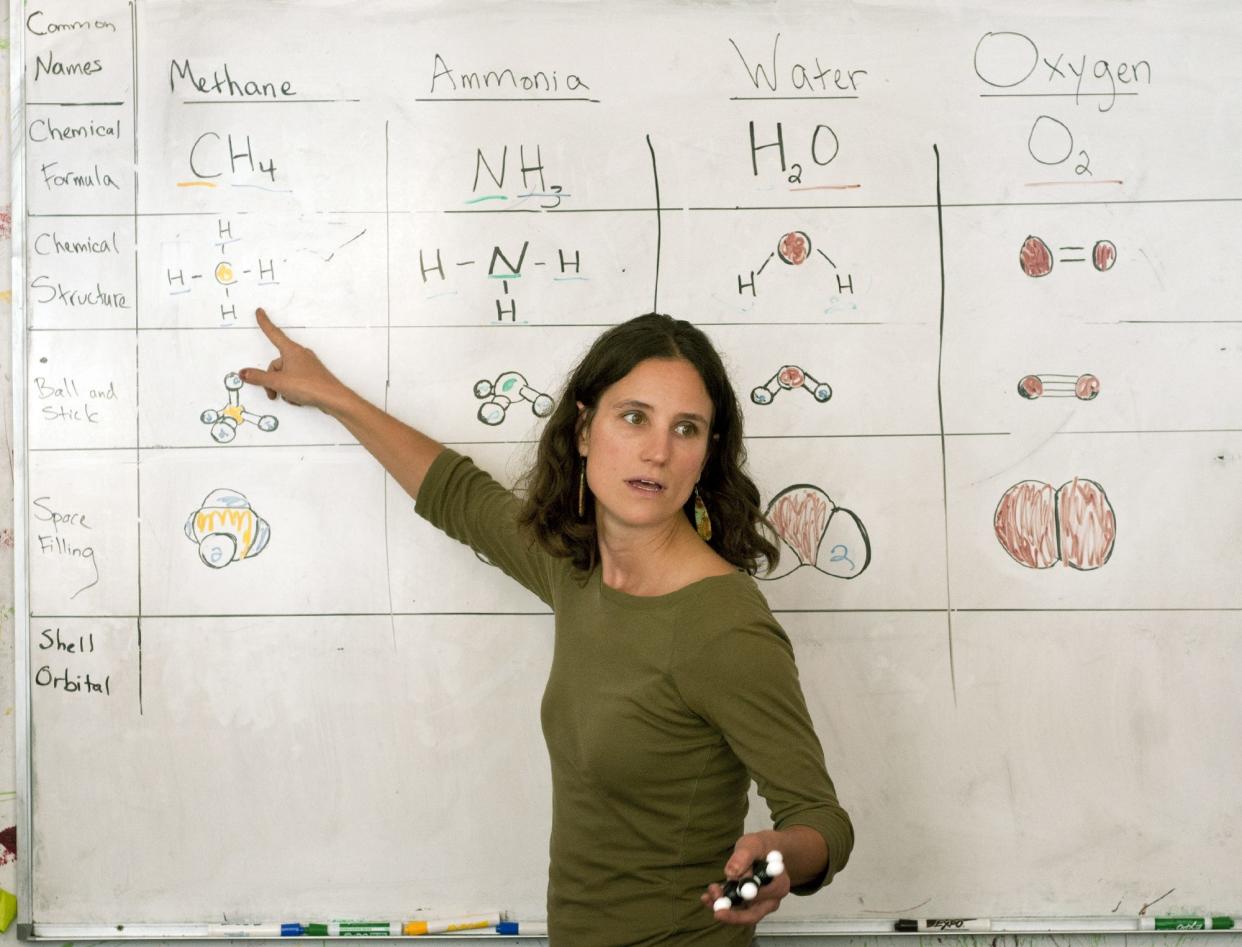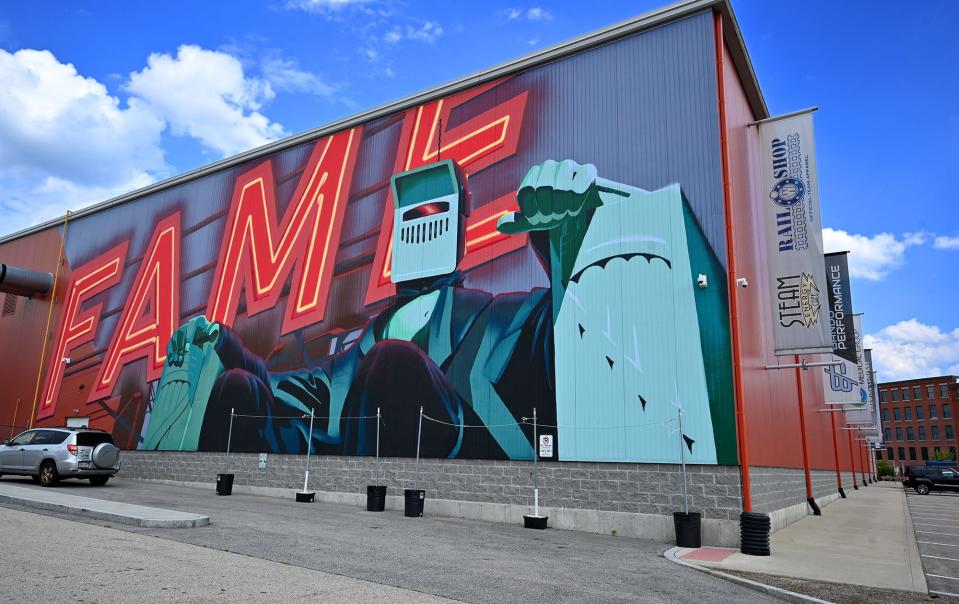Worcester creatives back state efforts to boost arts funding

Even as she invested her money, time and creative energies to build out the small space that housed her science and art education center, Lauren Monroe was conscious that it wasn’t really hers to keep.
“I had to navigate the idea that I may have to leave, that I did not have a long-term rental,” Monroe said. While she liked the space in the old sprinkler factory, she eventually transferred her business to the sixth floor of the old printer’s building on Portland Street, closer to downtown Worcester.
She believes her creativity and drive were stifled by the uncertainty of her situation.
“I had to remind myself that it was not my space, to not get too attached to work I would not be able to take with me,” Monroe said.
More: Public art in Worcester
In her search for the perfect landlord, one who was committed to keeping creative spaces in their building, she met up with other artists seeking the same dedication to the creative world. She eventually merged with a woodshop and a marker space, and they moved into what became Technocopia.
“It’s a great location,” Monroe said. But more important is the landlord’s commitment to the tenants.
“The WorcShop had to move two or three times during that same period we moved into the printers’ building,” Monroe said, referring to the industrial arts center that is now in Leicester.
Monroe said the group was seeking to purchase a structure to ensure the collaborative had total control of its space.
More and more artists colonies in Massachusetts are feeling the pressure from development forces. In Somerville, one of the largest collectives of makers in Massachusetts, the Artisans Asylum, was forced out of the city when the landlord sold the building. The group moved the maker space to Allston.
A handful of bills, dubbed the Creative Sector Agenda, filed by legislators seeks to address the loss of maker spaces, artists living and work spaces, and performance and exhibition spaces throughout Massachusetts. These measures address a number of issues, from funding sources for public art to giving municipalities tools to preserve spaces dedicated to creativity and culture.
The Creative Space Preservation Bill would allow municipalities to hold assets and property for the creation and preservation of creative endeavors and also allow the creation of municipal trusts to fund the spaces.
A different bill would establish a grant program within the state Office of Travel and Tourism to support tourism marketing and promotional expenses for arts and cultural organizations, with a focus on aspects that amplify the stories of historically marginalized or under-represented cultures.
Bill would include funding for public art in state construction projects
The PLACE Act, which stands for Program for Local Art and Community Engagement, would designate a portion of the total cost of new construction or rehabilitation of state-owned properties toward creating and maintaining public art in Massachusetts. The bill would codify the process used to commission public art and make it easier for municipalities to engage residents in developing relevant and inclusive public art.
One bill would remove barriers to creative spaces. A fifth measure would establish a Downtown Vitality Fund using 15% of online sales revenues originating in the state. Those funds would support creating vibrant downtowns, with cultural events, businesses in the state’s Gateway Cities and other low-income communities.
Emily Ruddock, of MASSCreative, a grassroots organization that advocates for a more equitable and inclusive arts, cultural and creative sector, said other countries have successfully implemented the construction set-asides. The bill, she said, would give municipalities the tools needed to fund public art.
Rep. Mary Keefe, D-Worcester, one of the co-sponsors of the PLACE Act, with Rep. Steve Ultrino, D-Malden, and Senators Robyn Kennedy, D-Worcester and Paul Mark, D-Pittsfield, said the state’s artists are losing space. The bill, Keefe said, will give municipalities a pot of money to support public art.
Fabian Barracks, Cultural Development Officer for the city of Worcester and the executive director of the Worcester Cultural Coalition, said officials are fully in support of the PLACE Act.
"Public Art is one of the greatest ways in which our city reflects the beauty of our constituents," Barracks said. "It empowers our artists, fosters a sense of pride and belonging for our residents, enhances the aesthetics of neighborhoods and attracts tourists to our spaces."

He credited the POW! WOW! mural festival for creating a vibrant community and for the increase in works of public art around the city.
"It is critical that through art we continue to preserve our culture and history as well as immortalize people who have made a significant contribution to our society," Barracks said.
The city and arts culture has connected current residents to "our ancestors and forefathers and tell our story through sculptors and other art forms that compel us to learn and appreciate our history."
He said the City of Worcester remains committed to promoting public art and believes that the PLACE Act will create a sustainable source of funding while guaranteeing that artistic expressions is embedded in all developmental plans.
"Our Cultural Plan has acknowledged and prioritized public art and creative space design as one of our key strategies for economic vitality," Barracks said. "We have established a Public Art Working Group that is vested in the proliferation art initiatives across the city. We continue to advocate for the prioritization of public art and the stability of funds to support creative placemaking.”
In discussing public art, Ruddock alluded to the art installed in Porter and Davis squares with the expansion of the MBTA Red Line decades ago. The installations, a giant rotating mobile in Cambridge’s Porter Square, statutes and murals in Somerville’s Davis Square, “bring the spaces to life,” Ruddock said.
“Public art helps people feel safer,” in their communities, Ruddock said. “Together, we will make Massachusetts a creativity-driven state from the ground up.”
Lack of affordable work spaces could cause exit of artists
As development pressures mount, many artists lack accesses to work spaces, said Claudia Zarazua, the arts and culture planning director for the City of Cambridge. “Many emerging artists are working from home,” Zarazua said, adding that some 80 creative spaces in the city are struggling to keep up with rent and building maintenance costs.
“Without affordable studio spaces, they will leave,” Zarazua said.
It is not without irony that the artists welcomed to less desirable commercial properties and city neighborhoods are ousted once their efforts to improve the spaces pays off.
“They are welcomed into a space, pay low rents, urged to make changes, paint, build out the studio, create art work, beautify a structure,” Monroe said. “People come into the neighborhoods, they are engaged, then the owner turns around and sells the building. Then it’s all over.”
This article originally appeared on Telegram & Gazette: Mass. lawmakers hear bills to support artists, creative spaces

